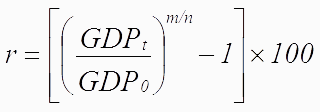Which Census Bureau population estimates does BEA use in the calculation of state and county per capita personal income statistics?
BEA uses Census Bureau midyear (July 1) resident population estimates for states and counties to calculate per capita personal income estimates. Each new series of data (called vintages) incorporates the latest administrative record data, geographic boundaries, and methodology. Therefore, the entire time series of estimates beginning with the most recent decennial census is revised annually.

